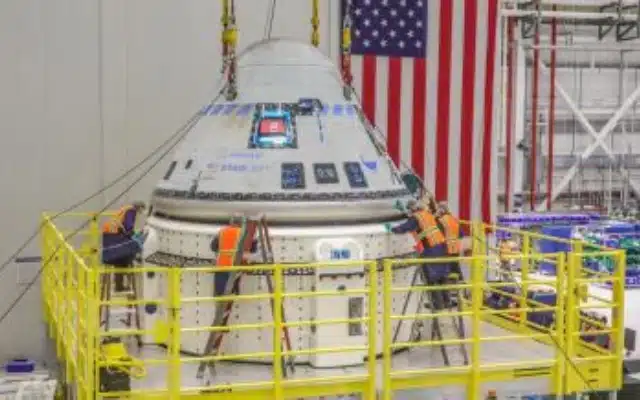Only four nations have managed to land a private company on the moon, and the Pittsburgh company wants to be the first. However, a Houston-based company also has a lander prepared for takeoff, which could outpace it and reach the lunar surface via a more direct route. “First off, the launch. Thornton wrote, “To be determined, first to land is TBD.”
On Monday, the first American lunar lander in over 50 years took off for the moon, setting off a space race among private enterprises to supply NASA and other clients.
Astrobotic Technology’s lander caught a ride on a brand-new rocket, United Launch Alliance’s Vulcan. The Vulcan streaked through the Florida predawn sky, putting the spacecraft on a roundabout route to the moon that should culminate with an attempted landing on Feb. 23. “So, so, so excited. We are on our way to the moon!” Astrobotic chief executive John Thornton said. The Pittsburgh company aims to be the first private business to successfully land on the moon, something only four countries have accomplished. But a Houston company also has a lander ready to fly, and could beat it to the lunar surface, taking a more direct path.“First to launch. First to land is TBD,” to be determined, Thornton noted.
NASA gave the two companies millions to build and fly their own lunar landers. The space agency wants the privately owned landers to scope out the place before astronauts arrive while delivering NASA tech and science experiments as well as odds and ends for other customers. Astrobotic’s contract for the Peregrine lander: $108 million.
The last time the U.S. launched a moon-landing mission was in December 1972. Apollo 17’s Gene Cernan and Harrison Schmitt became the 11th and 12th men to walk on the moon, closing out an era that has remained NASA’s pinnacle. The space agency’s new Artemis program — named after the twin sister of Apollo in Greek mythology — looks to return astronauts to the moon’s surface within the next few years. First will be a lunar fly-around with four astronauts, possibly before the end of the year.
ULA declared success once the lander was free of the rocket’s upper stage, nearly an hour into the flight. “Yee-haw!” shouted chief executive Tory Bruno. “I am so thrilled, I can’t tell you how much.”
The Soviet Union and the U.S. racked up a string of successful moon landings in the 1960s and 70s, before putting touchdowns on pause. China joined the elite club in 2013 and India in 2023. But last year also saw landers from Russia and a private Japanese company slam into the moon. An Israeli nonprofit crashed in 2019.
SpaceX will launch a lander from Intuitive Machines the following month. Given the more straightforward one-week path taken by the Nova-C lander, it is possible that both spacecraft will try to land within days or even hours of each other.
The largest challenge, by far, will be the hour-long descent to the moon, which Thornton described as “exciting, nail-biting, terrifying all at once.”
In addition to conducting NASA experiments, Astrobotic established its own freight company. It filled the 6-foot (1.9-meter) Peregrine lander with a variety of items, such as a piece of rock from Mount Everest, toy cars from Mexico that can be launched to the moon and driven around, and the ashes and DNA of space enthusiasts who have passed away, such as science fiction author Arthur C. Clarke and creator of “Star Trek,” Gene Roddenberry.
Because of the human remains, the Navajo Nation recently requested that the launch be postponed. claiming that it would be a “deep desecration” of a celestial body that Native Americans held in high regard. Although Thornton acknowledged that the December objections were received too late, he pledged to work with the Navajo to find “a good path forward” for upcoming missions. No one culture or religion owns the moon, so no one should be able to block a mission, according to a statement from Celestis, one of the spaceflight memorial companies that purchased space on the lander. The rocket’s upper stage, which was propelled into an endless orbit around the sun that extended as far as Mars, has more remnants.
Peregrine cargo fares varied from several hundred dollars to $1.2 million per kilogram (2.2 pounds), which was far too little for Astrobotic to turn a profit. However, Thornton says that’s not the point for this inaugural flight.”Many people’s hopes and dreams are at stake here,” he remarked.
The Science and Educational Media Group of the Howard Hughes Medical Institute provides support to the Associated Press Health and Science Department. All content is the exclusive responsibility of the AP.
Read More

















